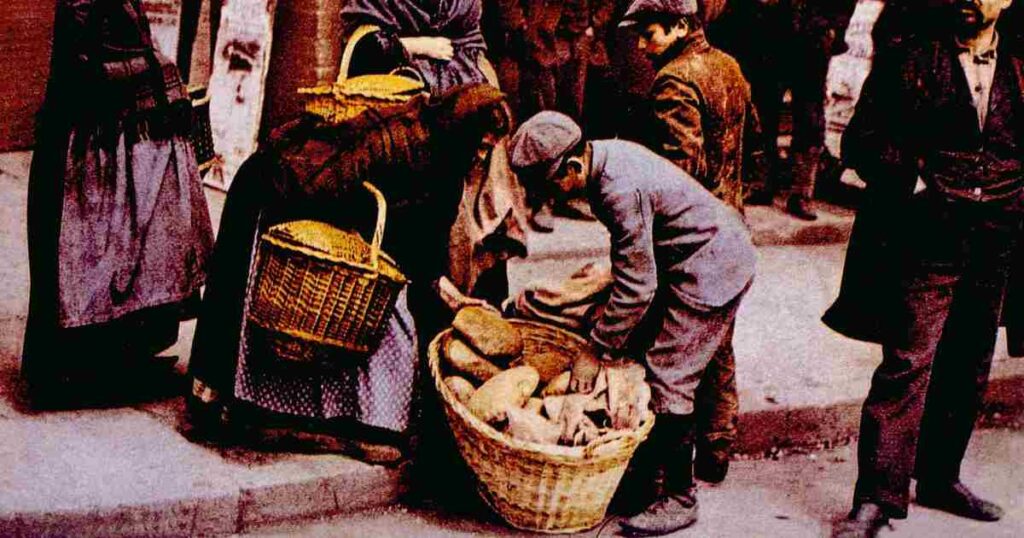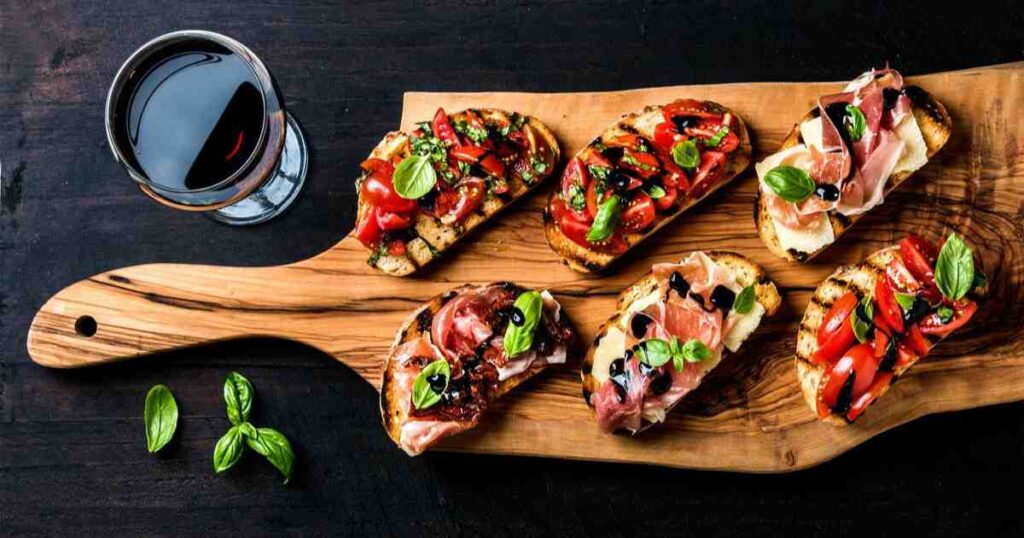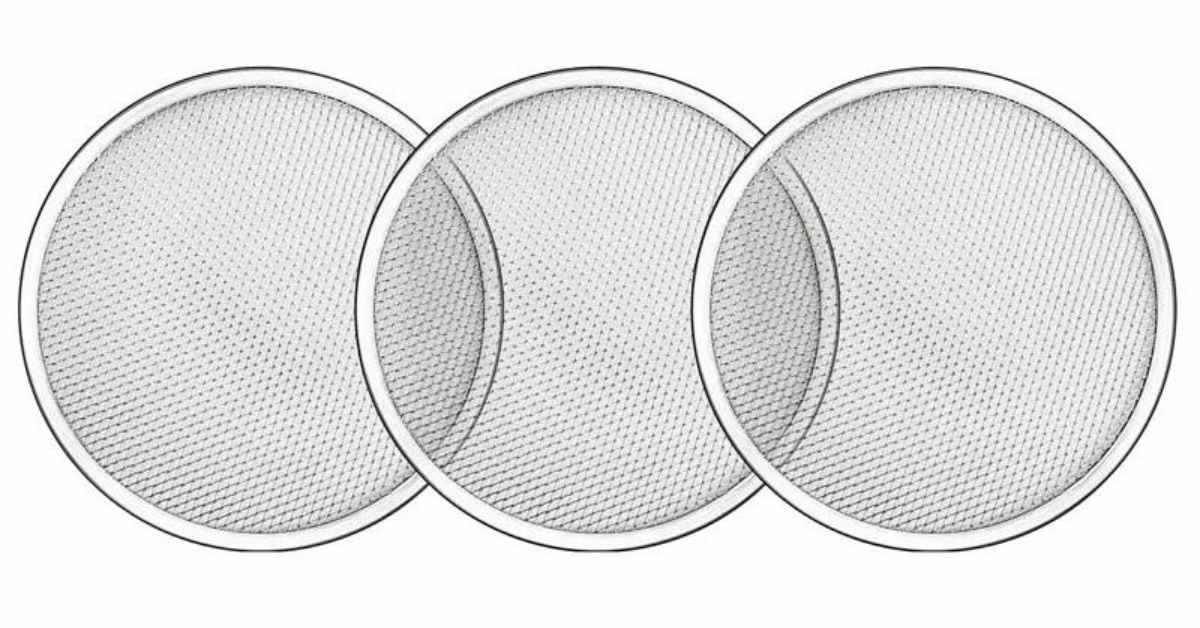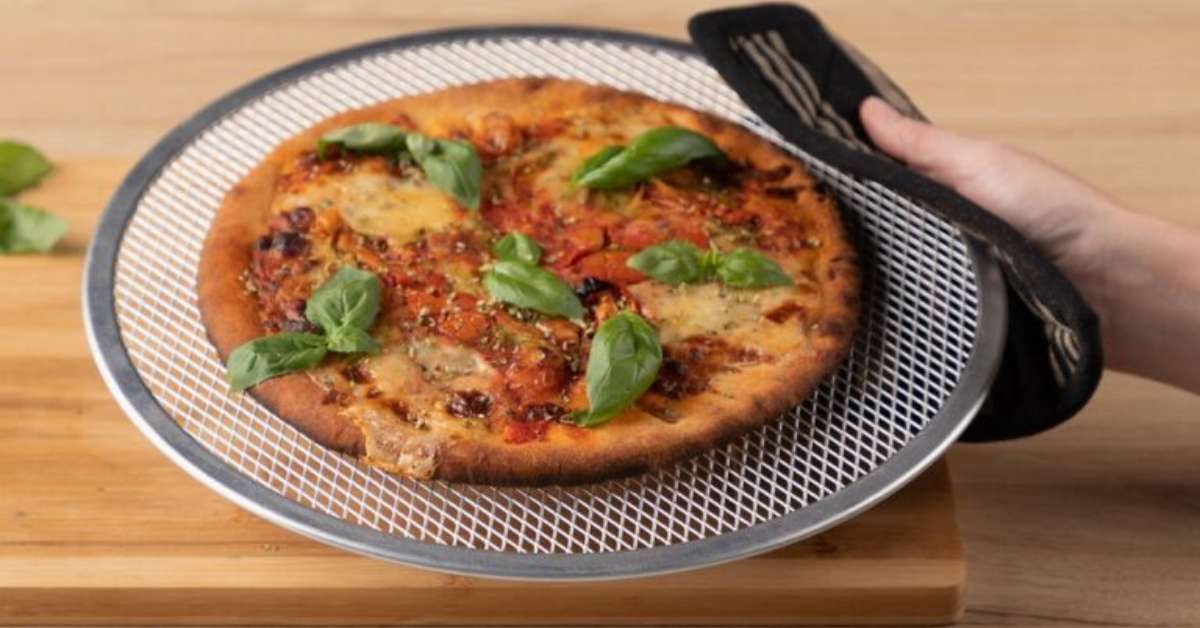Welcome to our comprehensive guide on Panella Bread! In this article, we’ll delve into the world of Panella Bread, exploring its rich history, mouthwatering offerings, and why it continues to be a beloved choice for bread enthusiasts worldwide.
Whether you’re a seasoned bread lover or simply curious about this delectable delight, we’ve got you covered. So, let’s jump right in and discover the fascinating world of Panella Bread!
Table of Contents
ToggleWhat is Panella Bread
Panella Bread is a type of traditional Italian bread that has gained immense popularity in recent years. It’s distinctive round shape and delightful golden crust characterize it. This bread is made with a unique blend of high-quality ingredients, including wheat flour, yeast, salt, and water.
The unique aspect of Panella Bread lies in its preparation method, which involves a slow fermentation process that results in a flavorful and airy texture. With its rustic appearance and delightful taste, Panella Bread has become a staple in Italian cuisine and is now savored by bread lovers around the globe.
The History of Panella Bread

Panella Bread traces its origins back to ancient times when people first developed bread-making techniques. However, it was in Italy that Panella Bread truly flourished and earned its reputation as a culinary masterpiece. The bread’s name, “Panella,” is derived from the Italian word “Panella,” meaning “small loaf of bread.” It has been a staple in Italian households, often enjoyed alongside meals or used as a base for sandwiches and bruschetta.
Over the years, The Bread has evolved, adapting to changing tastes and preferences. Traditional bakeries have passed down their secret recipes from one generation to another, ensuring the preservation of authentic flavors and techniques. Today, people continue to cherish Panella Bread for its simplicity, versatility, and exceptional taste.
As we delve deeper into this article, we’ll explore the various types of Panella Bread, regional variations, and even some innovative recipes that incorporate this delightful bread. So, please keep reading to uncover the fascinating journey of Panella Bread and all the wonders it has to offer.
What is Panella Bread Made of
The artisans craft Panella Bread using a simple yet carefully selected combination of ingredients. The traditional recipe calls for a handful of fundamental components to create the bread’s signature taste and texture. Let’s take a closer look at the key ingredients that make up this delectable bread:
Wheat Flour: The foundation of Panella Bread lies in high-quality wheat flour. It provides the structure and elasticity necessary for the dough to rise and develop a light, fluffy texture. Different varieties of wheat flour, such as all-purpose or bread flour, can be used depending on the desired outcome.
Yeast: Yeast is responsible for fermentation, giving Panella Bread its distinct flavor and airy crumb. As the yeast feeds on the natural sugars in the dough, it produces carbon dioxide gas, causing the dough to rise and expand.
Salt: Salt plays a crucial role in enhancing the overall taste and balancing the flavors in Panella Bread. It helps regulate fermentation, controls yeast growth, and adds depth to the bread’s flavor profile.
Water: Water is the primary liquid used in Panella Bread dough. It hydrates the flour, activates the yeast, and contributes to the development of gluten strands, resulting in a desirable chewy texture.
These four essential ingredients form the foundation of Panella Bread. However, recipe variations may incorporate additional elements such as olive oil, honey, or other flavorings to add a unique touch. Combining these ingredients and careful fermentation and baking techniques gives Panella Bread exceptional taste, texture, and characteristic golden crust.
How is Panella Bread Made
Making Panella Bread involves several steps that require patience, skill, and attention to detail. Let’s dive into the method behind crafting this delightful bread:
- Mixing the Dough: To begin, the ingredients – wheat flour, yeast, salt, and water – are combined in a mixing bowl. The proportions may vary slightly depending on the recipe and desired yield. They gently mix the ingredients until a cohesive dough forms.
- Kneading: The dough is then transferred to a clean, floured surface and kneaded. Kneading is a crucial step that helps develop gluten, giving the bread structure and elasticity. The process involves folding, stretching, and pressing the dough with the heels of the hands, making it smooth and elastic.
- Fermentation: After kneading the dough correctly, they place it in a bowl, cover it with a damp cloth, and leave it to ferment. This slow fermentation process allows the yeast to work its magic, releasing carbon dioxide gas and developing complex flavors within the dough. The fermentation time can range from overnight hours, depending on the recipe and desired flavor profile.
- Shaping: After fermentation, the dough is gently deflated and shaped into round loaves. Traditionally, Panella Bread is shaped into a circular form, sometimes with a cross-shaped cut on the top. This shaping helps the bread retain its structure during baking and contributes to the characteristic appearance of Panella Bread.
- Proofing: Once shaped, the loaves are placed on a baking tray or a proofing basket and left to undergo a final rise, known as proofing. This allows the dough to relax and rise further, resulting in a light and airy texture. The proofing time can vary but generally takes 1-2 hours, allowing the dough to reach its optimal volume.
- Baking: Finally, the proofed loaves are ready for baking. They are placed in a preheated oven and baked at a high temperature. The exact baking time and temperature may vary depending on the recipe, but typically, Panella Bread is baked at a moderate to high temperature, resulting in a beautiful golden crust. The baking process enhances the flavors, creates a crispy crust, and gives the bread its delightful aroma.
- Cooling and Enjoying: Once baked, the Panella Bread is removed from the oven and left to cool on a wire rack. It is essential to allow the bread to cool completely before slicing to ensure the best texture and flavor. Once cooled, Panella Bread is ready to be enjoyed on its own, used as a base for sandwiches, or paired with various spreads and toppings.
That’s the step-by-step process of making Panella Bread. Each preparation stage contributes to the bread’s unique characteristics, resulting in a flavorful, crusty, and airy loaf.
Panella bread varieties
Panella Bread boasts a range of delightful variations, each with unique characteristics and regional influences. Let’s explore some of the popular Panella Bread varieties that have captivated bread enthusiasts worldwide:
Classic Panella:
The classic Panella Bread, also known as “Pane Casereccio,” is the quintessential representation of this traditional Italian bread. It features a round shape with a golden, crusty exterior and a soft, chewy interior. This variety showcases the authentic flavors and textures that have made Panella Bread a beloved choice among bread lovers.
Whole Wheat Panella:
Whole wheat Panella Bread is an excellent choice for healthier alternatives. It is made using whole wheat flour, which retains the bran and germ, providing added fiber and nutritional benefits. This variety maintains the distinct flavor and texture of Panella Bread while offering a wholesome twist.
Olive Panella:
Infused with the rich and savory taste of olives, the Olive Panella Bread is a flavor-packed delight. Chunks of olives are incorporated into the dough during mixing, infusing the bread with their distinctive aroma and flavor. The Olive Panella adds a delightful twist to sandwiches, bruschetta, or enjoyed alone.
Herbed Panella:
Herbed Panella Bread takes the classic recipe and elevates it with aromatic herbs. Fresh herbs such as rosemary, thyme, or basil are finely chopped and incorporated into the dough, imparting a fragrant and savory essence. This variety pairs exceptionally well with soups, salads, and cheese platters.
Seeded Panella:
Seeded Panella Bread features an assortment of seeds sprinkled on top or incorporated into the dough. Sesame, poppy, flaxseeds, or sunflower seeds add a delightful crunch and impart their unique flavors. The seeded variation provides an extra dimension of texture and visual appeal to the bread.
Regional Variations:
Across different regions of Italy, you’ll find additional regional variations of Panella Bread. Each area spins the classic recipe, incorporating local ingredients and techniques. These variations showcase the diverse culinary heritage of Italy and offer a fascinating exploration of Panella Bread’s versatility.
Remember, Panella Bread varieties are not limited to the options mentioned above. Creative bakers and innovative recipes continue to push the boundaries, introducing exciting combinations and flavors. The world of Panella Bread is as diverse as it is delicious, offering something for every bread enthusiast.
Regional Panella Bread Varieties
Panella Bread not only boasts a variety of flavors but also showcases regional variations that highlight the culinary diversity across different parts of Italy. Let’s explore some of the notable regional Panella Bread varieties:
Tuscan Panella:
Hailing from the picturesque region of Tuscany, Tuscan Panella Bread is known for its simplicity and rustic charm. It is traditionally made with wheat flour, a natural sourdough starter, and a touch of olive oil. The bread is baked in wood-fired ovens, resulting in a crusty exterior and a soft, airy interior.
Sicilian Panella:
Sicilian Panella Bread, also known as “Pane Cafone,” is a traditional bread from the island of Sicily. It is characterized by its elongated shape and light, fluffy texture. This bread often incorporates a mix of durum wheat flour and semolina, giving it a slightly golden hue and a distinct flavor. Sicilian Panella Bread is commonly enjoyed with local specialties like caponata or arancini.
Pugliese Panella:
From the region of Puglia in southern Italy comes Pugliese Panella Bread. This variety is made using a combination of durum wheat flour and finely ground semolina, resulting in bread with a slightly dense crumb and a distinct yellow color. Pugliese Panella Bread is often shaped into round loaves with a characteristic cross-shaped cut on top.
Venetian Panella:
Venetian Panella Bread, also known as “Pane Goto,” is a traditional bread from the Veneto region. It is made using a combination of wheat flour, milk, and a touch of butter or olive oil. Adding these ingredients gives the bread a soft and tender crumb, making it perfect for enjoying with local cured meats and cheeses.
Roman Panella:
Roman Panella Bread, also called “Pane Romano,” is a popular variety originating in the Eternal City of Rome. Its elongated shape, crisp crust, and soft, airy interior characterize it. Roman Panella Bread is often enjoyed as a sandwich bread, filled with various delicious ingredients like prosciutto, mozzarella, and fresh vegetables.
These regional Panella Bread varieties represent their regions’ culinary heritage and unique flavors. Each combination brings charm and is deeply intertwined with the local culinary traditions. Exploring these regional variations allows you to embark on a delightful gastronomic journey through Italy.
Best Ways to Enjoy Panella Bread

Panella Bread offers many delicious possibilities for enjoying this delectable bread. From simple preparations to creative culinary adventures, here are some of the best ways to savor and relish Panella Bread:
Bruschetta:
Panella Bread makes an excellent base for bruschetta, a classic Italian appetizer. Toasted slices of Panella Bread are rubbed with garlic and drizzled with extra virgin olive oil, then topped with fresh tomatoes, basil, and a sprinkle of salt. The combination of the crusty bread and vibrant toppings creates a burst of flavors with every bite.
Panini Sandwiches:
Slice Panella Bread horizontally and use it to make irresistible panini sandwiches. Layer it with your favorite fillings such as cured meats, cheese, roasted vegetables, or spreads like pesto or tapenade. Grill the panini until the bread turns golden and the fillings are warm and melty. The result is a satisfying, handheld meal packed with flavor.
Toast with Spreads:
Toasted Panella Bread provides a delightful canvas for a variety of spreads. Slather it with creamy avocado, nut butter, or ricotta cheese, and top with fresh herbs, sliced fruits, or a drizzle of honey. The contrast between the crispy bread and the creamy toppings creates a delightful combination of textures and flavors.
Bread Pudding:
Stale Panella Bread can be transformed into a comforting dessert by making bread pudding. Tear the bread into pieces and soak it in milk, eggs, sugar, and spices. Bake until golden and set, resulting in a warm and custardy treat that can be served with a dollop of whipped cream or a drizzle of caramel sauce.
Crostini:
Thinly slice Panella Bread, toast it until crisp and create flavorful crostini appetizers. Top the crostini with toppings like goat cheese and fig jam, smoked salmon and cream cheese, or roasted vegetables and feta cheese. These bite-sized delights are perfect for entertaining or as a flavorful snack.
Panzanella Salad:
Panella Bread can also be used to make a traditional Italian Panzanella salad. Tear the bread into bite-sized pieces and combine it with juicy tomatoes, cucumbers, red onions, basil, and a tangy vinaigrette dressing. The bread absorbs the flavors of the ingredients, resulting in a refreshing and satisfying salad.
These are just a few ideas to get you started on your Panella Bread culinary journey. The versatility of this bread allows you to explore your creativity and experiment with various combinations and flavors. Whether indulging in a simple bruschetta or crafting a gourmet panini, Panella Bread will elevate your dining experience.
Health Benefits of Panella Bread
Panella Bread delights our taste buds and offers several health benefits. Here are some of the positive aspects that make Panella Bread a nutritious choice:
Good Source of Fiber: Panella Bread, especially when made with whole wheat or whole grain flour, is a good source of dietary fiber. Fiber aids digestion promotes a feeling of fullness, and helps regulate blood sugar levels. Including Panella Bread in your diet can contribute to a well-balanced fiber intake.
Nutrient-Rich: Panella Bread contains essential nutrients like vitamins and minerals. Whole grain varieties are particularly rich in nutrients such as B vitamins (thiamin, riboflavin, niacin), iron, and magnesium. These nutrients are crucial in energy production, brain function, and overall health.
Satiating and Weight Management: The combination of fiber and complex carbohydrates in Panella Bread can help you feel satiated for extended periods. This can aid in portion control and contribute to weight management efforts by reducing the tendency to overeat.
Energy Boost: The carbohydrates in Panella Bread provide a quick and efficient energy source for the body. They are essential for fueling daily activities, physical exertion, and optimal brain function.
Heart Health: Whole grain Panella Bread, with its high fiber content, can support heart health. A diet rich in whole grains has been associated with a lower risk of heart disease, as it can help maintain healthy cholesterol levels, lower blood pressure, and reduce the risk of developing cardiovascular issues.
Digestive Health: The fiber content in Panella Bread promotes a healthy digestive system by aiding regular bowel movements and preventing constipation. It also supports a diverse and thriving gut microbiome essential for overall digestive health.
Versatile and Nutritious Ingredients: Panella Bread can be made with various wholesome ingredients, such as whole wheat flour, natural sourdough starter, and olive oil. These ingredients add to the nutritional profile of the bread, providing additional health benefits and enriching the eating experience.
While Panella Bread offers several health benefits, it’s important to remember that portion control and overall dietary balance are crucial for maintaining a healthy lifestyle. Pairing Panella Bread with various nutrient-dense foods like vegetables, lean proteins, and healthy fats can create a well-rounded and nourishing meal.
How to Make Perfect Panella Bread at Home
If you’re eager to experience the joy of freshly baked Panella Bread right in your kitchen, follow these steps to create the perfect loaf:
Ingredients:
- 4 cups of bread flour
- Two teaspoons of instant yeast
- Two teaspoons of salt
- 1 ½ cups of warm water
- Olive oil for greasing
Instructions:
Mixing the Dough:
- Combine the bread flour, instant yeast, and salt in a large mixing bowl. Mix them until well combined.
- Gradually add the warm water while stirring the mixture. Continue mixing until a sticky dough forms.
Kneading the Dough:
- Transfer the dough onto a lightly floured surface. Knead the dough for about 8-10 minutes until it becomes smooth and elastic. Add small amounts of flour if needed to prevent sticking, but avoid adding too much, as it may make the bread dense.
- Shape the dough into a ball.
First Rise:
- Lightly grease a clean bowl with olive oil. Place the dough in the bowl, turning it to coat it with oil. Cover the bowl with a kitchen towel or plastic wrap.
- Allow the dough to rise in a warm, draft-free area for about 1-2 hours or until it doubles in size.
Shaping the Loaf:
- Once the dough has risen, gently deflate it by pressing down on it with your fingertips.
- Transfer the dough to a lightly floured surface and shape it into a round or oval loaf. Tuck the edges underneath to create a smooth top.
Second Rise:
- Place the shaped loaf on a parchment-lined baking sheet or in a greased loaf pan. Cover it with a kitchen towel and let it rise for another 1 hour until it puffs up.
Preparing for Baking:
- Preheat your oven to 425°F (220°C) and place a baking dish with water on the bottom rack. This will create steam during baking, resulting in a crispier crust.
- Optionally, you can slash the top of the loaf with a sharp knife to allow it to expand during baking.
Baking the Bread:
- Carefully transfer the risen loaf to the preheated oven. Bake for approximately 25-30 minutes or until the bread turns golden brown and sounds hollow when tapped on the bottom.
- Once baked, remove the bread from the oven and let it cool on a wire rack before slicing and serving.
Now you can enjoy the delightful aroma and taste of freshly baked Panella Bread made right in your kitchen. Experiment with different variations and flavors to create your signature Panella Bread recipes. Happy baking!
How to Store Panella Bread
To keep your Panella Bread fresh and delicious for as long as possible, follow these simple storage guidelines:
Allow the Bread to Cool: Before storing Panella Bread, ensure it has completely cooled down. Placing warm bread in an airtight container can create condensation, leading to moisture buildup and making the bread soggy.
Wrap in Plastic or Aluminum Foil: Once the bread has cooled, wrap it tightly in plastic wrap or aluminum foil. This helps to preserve the moisture and prevent the bread from drying out.
Store at Room Temperature: Panella Bread is best stored at room temperature in a cool, dry place. Avoid storing it in the refrigerator, as this can accelerate the staling process and affect the texture and flavor of the bread.
Use Bread Bags or Bread Boxes: A bread bag or box can provide an ideal storage environment for Panella Bread. They help maintain the proper humidity level while protecting the bread from exposure to air and other odors in the kitchen.
Slice as Needed: To prolong the freshness of the whole loaf, consider slicing the bread as needed instead of cutting it all at once. This helps to minimize exposure to air and keeps the remaining portion of the loaf fresh for a longer time.
Freeze for Long-Term Storage: If you want to store Panella Bread for an extended period, freezing is an excellent option. Slice the bread, place the slices in a freezer-safe bag or container, and store them in the freezer. Frozen Panella Bread can be thawed at room temperature or gently warmed in an oven or toaster when ready to eat.
Consume within a Few Days: Panella Bread is best when consumed fresh. While proper storage techniques can help maintain its quality, consuming the bread within a few days is recommended for optimal taste and texture.
Frequently Asked Questions
What are the Ingredients in Panella Bread?
Panella Bread typically includes essential ingredients such as flour, water, yeast, and salt. Additional components may vary depending on the specific recipe or regional variations. Some variations may include olive oil, sugar, or natural sourdough starter.
Is Panella Bread Gluten-Free?
No, Panella Bread is not gluten-free. Traditional Panella Bread is made with wheat flour, which contains gluten. Gluten-free alternatives, using alternative flours such as rice flour or almond flour, can be used to make gluten-free versions of Panella Bread.
Can I Freeze Panella Bread?
Yes, Panella Bread can be frozen to extend its shelf life. It’s best to slice the bread before freezing for easier portioning. Place the slices in a freezer-safe bag or container, and remove as much air as possible. Frozen Panella Bread can be thawed at room temperature or gently warmed in an oven or toaster when ready to eat.
How Long Can I Store Panella Bread?
The shelf life of Panella Bread depends on various factors, such as the ingredients used, storage conditions, and preservatives (if any). Generally, Panella Bread can be stored at room temperature in a cool, dry place for 2-3 days. However, it is recommended to freeze the bread for more extended storage.
What Makes Panella Bread Different from Other Bread?
Panella Bread is distinct in its shape, texture, and preparation method. Panella Bread is round or oval-shaped, unlike typical loaf bread with a flat top and bottom. It has a crisp crust and a soft, slightly chewy interior. Panella Bread is often made using a wet dough and undergoes a unique baking process, which includes cooking the bread twice to achieve its characteristic texture and flavor.
Conclusion
Panella Bread is a beloved bread variety with a rich history and unique characteristics. Panella Bread has captured bread enthusiasts’ hearts and taste buds worldwide, from its humble origins to its diverse regional variations. Whether savoring the traditional recipe or exploring modern adaptations, Panella Bread offers a delightful combination of flavors, textures, and aromas.
Panella Bread is a true culinary gem with its versatility, health benefits, and the joy of baking it at home. So, embrace the art of Panella Bread making, indulge in its flavors, and experience the satisfaction of creating this delectable bread for yourself and your loved ones.






